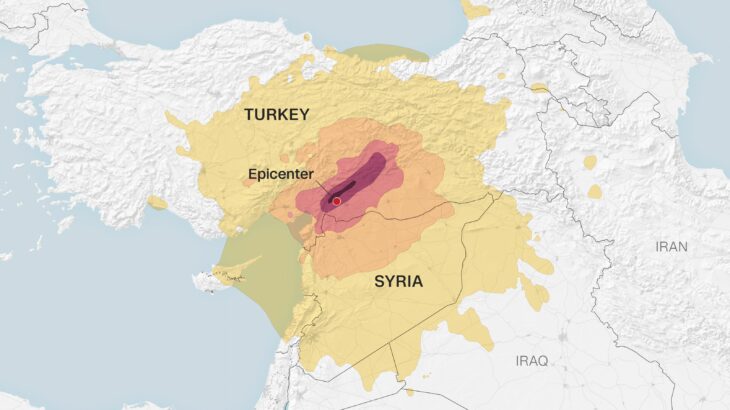Earthquake in Turkey : “The snow makes progress even more complicated”, explains a French rescuer, speleologist and rescuer.
“We are progressing in a kind of Mikado”, testified on Wednesday February 8 the French rescuer, speleologist and rescuer, president of the NGO World Rescue Corps, which is present in Turkey in Malatya, near Gaziantep, near the epicenter of the earthquake that hit Turkey and Syria on Monday. “We are forced to think about what we remove to be sure not to jeopardize this fragile balance in which we are progressing”, describes the French rescuer. He talks about relief operations which, according to him, “never happen fast enough”.
How are the operations carried out?
The French rescuer: Operations never happen fast enough. They mainly take place in conditions that are complicated for the population and for us. If the earthquake in Turkey hadn’t been enough, they took another 30 centimeters of snow behind. There are very low temperatures. We were minus 10 degrees at night, it doesn’t thaw during the day. The snow makes our progression complicated because we don’t see what we are progressing on at the level of the rubble. It is a city that is close to the epicenter and therefore strongly affected, strongly impacted. There are quite significant contrasts. Some neighborhoods are almost intact. And for example, in the neighborhood where we are working today, a building under construction is entire and all the rest, buildings of five to six floors, five to six meters high, have completely collapsed.
How do you proceed in front of these buildings?
We try to progress quickly. And to progress quickly, we use a lot of techniques so as not to do just anything, anywhere. First, we collect as many testimonies as possible from people who can tell us where their apartment was, who can still be stuck in it, where. Then, we have with us two dogs that we make work to locate the survivors. And we also come complete with a drone, a thermal camera, motion and sound detection. Then, we enter the millefeuille and we will make sure that the person is there and that we can get them out.
Miracles are rare, but they do happen. Were you able to rescue residents?
Last night we started working right away when we arrived. The night was long and only dead bodies were taken out. And then, this afternoon, we were lucky to make a last call on one of the floors. I heard someone answer me. And we were able to get a 26-year-old boy out in an hour who was just freezing, not hurt at all, just stuck in one of the rooms in his apartment.
What is the fear during rescue operations?
It’s not an obsession, because otherwise it would be difficult to work properly. But it is something that never leaves us. When we progress, we are forced to make room for ourselves and we are forced to think about what we are taking away to be sure not to jeopardize this fragile balance in which we are progressing. We progress in a kind of Mikado. And when we finally reach the victim, we were able to go there because we contorted ourselves. But it must most often be taken out on a stretcher, even perfused, with three people to manage to move the stretcher. So we’re going to take up space. This is where we must not miss, because we managed to do the hardest part. And when you are very close to the goal, you have to be very careful.


 9 February 2023
9 February 2023